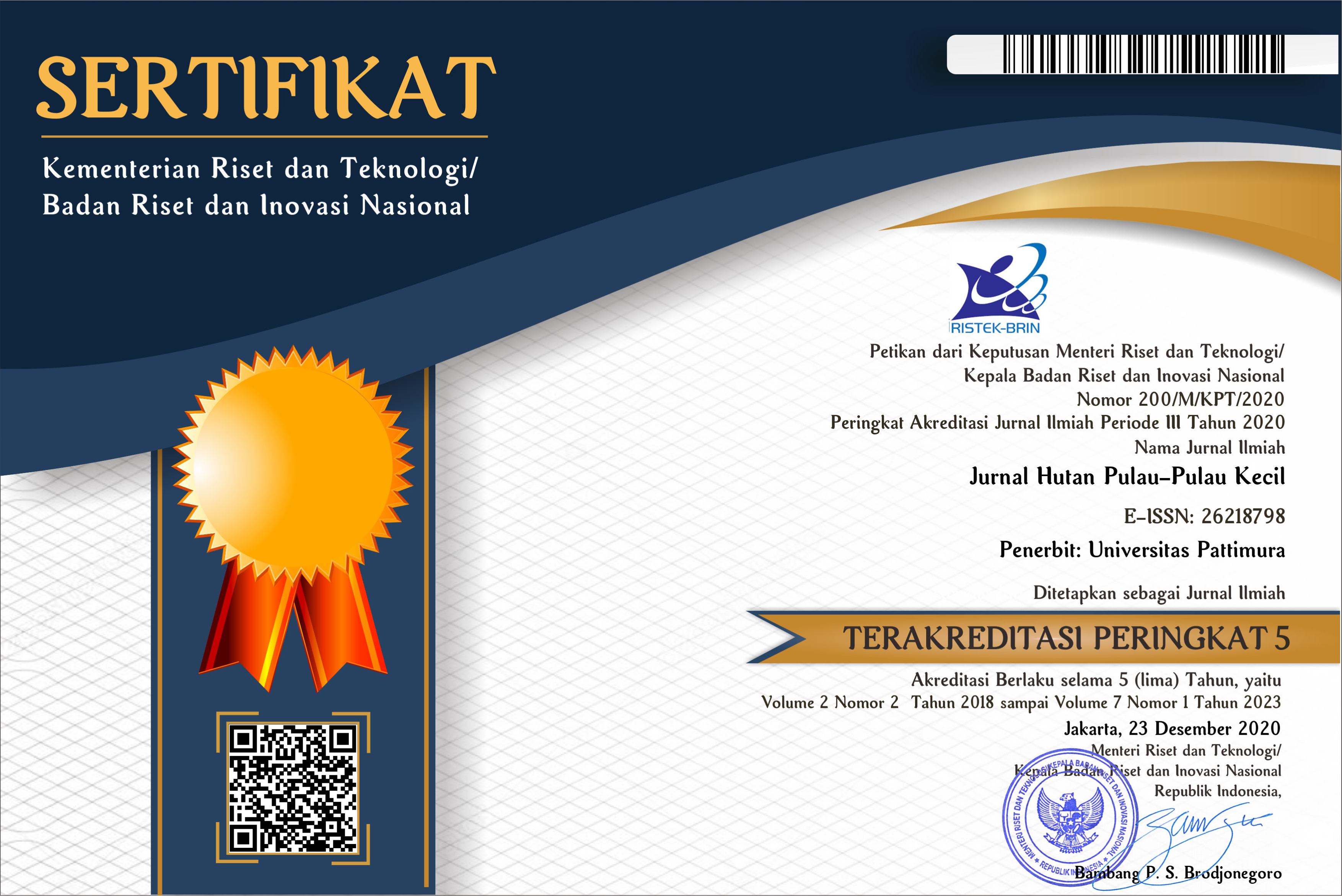PENGARUH SISTEM PENGELOLAAN AIR DAN VARIETAS TERHADAP HASIL PADI DAN EMISI GAS RUMAH KACA DI LAHAN TADAH HUJAN
Abstract
Rice field is an important role in sustainable national food security, rice production contributes to greenhouse gas emissions significantly, especially methane (Ch4). Some of these efforts to reduce GHG emissions in the paddy field has been done, such as water and fertilizer management, using low methane emission of rice varieties. The main objective of this study was to determine the effect of water management systems and rice varieties on grain yield and GHG emissions. The study was conducted at the Experimental Research Station of IAERI, Pati, Central Java in March to June 2016. The study design was a split plot with the factor I water management (A1 = Flooded 5 cm and A2 = Alternate Wetting and Drying / AWD), factor II rice varieties (V1 = Ciherang, V2 = Inpari 30, V3 = IPB3S), and replicated 3 times. GHG measurement was conducted using a closed chamber. The parameters were observed mainly CH4 and N2O fluxes, Eh and pH, water level surface, plant height and tiller number, grain and yield components. The results showed that the highest grain yields was A2V1
-1
treatment (AWD and Ciherang variety) amounted to 3.26 tons ha . The lowest of CH4 emissions was A2V1 treatment (AWD and Ciherang variety). N2O emissions produced the lowest in treatment A2V3 (AWD and IPB3S variety). The highest of GHG emissions was A1V3 treatment (continuous flooding and IPB3S variety). The lowest of GHG emissions was A2V1 treatment (AWD and Ciherang variety). The lowest emissions index was A2V2 treatment (AWD and Inpari 30 variety). AWD treatment could reduce GHG emissions of Ciherang, Inpari 30 and IPB3S rice varieties by 42%, 46%, and 30% compared to continuous flooding, respectively.
Downloads
References
Aulakh MS, Wassmann R, Bueno C, Kreuzwieser J and Rennenberg, H. 2001. Characterization of root exudates at different growth stages of ten rice (Oryza sativa L.) cultivars. Plant Biology 3: 139–149.
Bodelier, P.L., Roslev, P., Henckel, T., Frenzel, P., 2000. Stimulation by ammonium based fertilizers of methane oxidation in soil around roots. Nature 403, 421–424. Butterbach - Bahl , K ., Papen, H., Rennenberg, H., 1997. Impact of gas transportthrough rice cultivars on methane emission in rice paddy fields. Plant Cell Environ. 20, 1175–1183.
Bouman, B.A.M. and Tuong, T.P. 2001. Field water management to save water and increase its productivity in irrigated l o w land rice. Agricultural Water Management 49: 11-30.
Denman, K.L., Brasseur, G., Chidthaisong, A., Ciais, P., Cox, P.M., Dickinson, R.E., Hauglustaine, D., Heinze, C., Holland, E., Jacob, D., Lohmann, U., Ramachadran, S., da Silva Dias, P.C., Wofsy, S.C., Zhang, X., 2007. Coupling between changes in the climate system and biogeochemistry. Climate change 2007: The physical science basis. In: Soloma, S., Ain, D., Manning, M., Chen, Z., Marquis, M., Averyt, K.B., Tignon , M ., Miller, H . L. ( Eds. ) , Contribution of working Group I to the Fourth Assessment Report of the Intergovernmental Panel on Climate Change. Cambridge University Press, Cambridge, UK and New York, NY, pp. 499–587.
Dubey, S.K. 2005. Microbial ecology of methane emission in rice agroecosystem: a review. Applied Ecology and Environmental Research 3(2), 1-27.
IPCC, 2007. Summary for policymakers. In: Climate change 2007: The physical science basis. Contribution of Working Group 1 to the Fourth Assessment Report of the Intergovernmental Panel on Climate Change. Cambridge University Press, Cambridge, United Kingdom and New York, NY, USA.
Kerdchoechuen, O., 2005. Methane emission in four rice varieties as related to sugars and organic acids of roots and root exudates and biomass yield. Agric. Ecosyst. Environ. 108, 155–163
Lee DB, Jung SC, So KH, Jeong JW, Jung HC, Kim GY, Shim KM. 2012. Evaluation of mitigation technologies and footprint of carbon in unhulled rice production. Climate Change Res. 3: 129-142
Lu L, Wassmann R, Neue HU, Huang C and Bueno CS. 2000. Methanogenic responses to exogenous substrates in anaerobic rice. Soil Biology and Biochemistry 32: 1 683–1 690.
Christensen TR, Panikov N, Mastepanov M, Joabsson A, Steward A, Öquist M, Sommerkorn M, Reynaud S and Svensson B. 2003. Biotic controls on CO2 and CH4 exchange in wetlands – aclosed environment study. Biogeochemistry 64: 337–354.
Mishra SN, S Mitra, L Rangan, S Dutta and P Singh. 2012. Exploration of 'hot-spots' of methane and nitrous oxide emission from the agriculture fields of Assam, India. Agriculture & Food Security1:16
Wang, Z., Delaune, R.D., Lindau, C.W. W.H. Patrick Jr. 1992. Methane production from anaerobic soil amended with rice straw and nitrogen fertilizers. Fertilizer Research 33: 115. doi:10.1007/BF01051166
Yao, F., Huang, J., Cui, K., Nie, L., Xiang, J., Liu, X., Wu, W., Chen, M. and Peng, S. 2012. Agronomic performance of high-yielding rice variety grown under alternate wetting and drying irrigation. Field Crops Research 126:16-22




